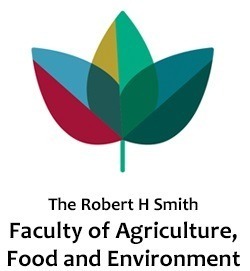Mello, A. ; Efroni, I. ; Rahni, R. ; Birnbaum, K. D. .
The Selaginella Rhizophore Has A Unique Transcriptional Identity Compared With Root And Shoot Meristems.
New Phytologist 2019,
222, 882-894.
Publisher's VersionAbstractThe genus Selaginella resides in an early branch of the land plant lineage that possesses a vasculature and roots. The majority of the Selaginella root system is shoot borne and emerges through a distinctive structure known as the rhizophore, the organ identity of which has been a long-debated question. The rhizophore of Selaginella moellendorffii – a model for the lycophytes – shows plasticity to develop into a root or shoot up until 8 d after angle meristem emergence, after which it is committed to root fate. We subsequently use morphology and plasticity to define the stage of rhizophore identity. Transcriptomic analysis of the rhizophore during its plastic stage reveals that, despite some resemblance to the root meristem, rhizophore gene expression patterns are largely distinct from both shoot and root meristems. Based on this transcriptomic analysis and on historical anatomical work, we conclude that the rhizophore is a distinct organ with unique features. © 2019, Blackwell Publishing Ltd. All rights reserved.
Lieberman-Lazarovich, M. ; Yahav, C. ; Israeli, A. ; Efroni, I. .
Deep Conservation Of Cis-Element Variants Regulating Plant Hormonal Responses.
The Plant Cell 2019.
Publisher's VersionAbstractPhytohormones regulate many aspects of plant life by activating transcription factors (TF) that bind sequence-specific response elements (RE) in regulatory regions of target genes. Despite their short length, REs are degenerate with a core of just 3-4bp. This degeneracy is paradoxical, as it reduces specificity and REs are extremely common in the genome. To study whether RE degeneracy might serve a biological function we developed an algorithm for the detection of regulatory sequence conservation and applied it to phytohormones REs in 45 angiosperms. Surprisingly, we found that specific RE variants are highly conserved in core hormone response genes. Experimental evidence showed that specific variants act to regulate the magnitude and spatial profile of hormonal response in Arabidopsis and tomato. Our results suggest that hormone-regulated TFs bind a spectrum of REs, each coding for a distinct transcriptional response profile. Our approach has implications for precise genome editing and for rational promoter design.
Israeli, A. ; Capua, Y. ; Shwartz, I. ; Tal, L. ; Meir, Z. ; Levy, M. ; Bar, M. ; Efroni, I. ; Ori, N. .
Multiple Auxin-Response Regulators Enable Stability And Variability In Leaf Development.
Curr Biol 2019.
AbstractAuxin-signal transduction is mediated by the antagonistic activity of transcriptional activators and repressors. Both activators and repressors belong to gene families, but the biological importance of this complexity is not clear. Here, we addressed this question using tomato leaf development as a model by generating and analyzing mutants in multiple auxin-response components. In developing compound tomato leaves, auxin promotes leaflet formation and blade growth, and in the intercalary regions between leaflets, auxin response is inhibited by the Aux/IAA protein ENTIRE (E). e mutants form simple leaves due to ectopic blade growth in the intercalary domain. Using this unique loss-of-function phenotype and genome editing of auxin-response factor (ARF) genes, encoding auxin-response activators, we identified the contribution of specific ARFs to the e phenotype. Mutations in the related ARFs SlMP, SlARF19A, and SlARF19B, but not SlARF7, reduced the leaf blade and suppressed the e phenotype in a dosage-dependent manner that correlated with their relative expression, leading to a continuum of shapes. While single e and slmp mutants affected blade growth in an opposite manner, leaves of e slmp double mutants were similar to those of the wild type. However, the leaf shape of e slmp was more variable than that of the wild type, and it showed increased sensitivity to auxin. Our findings demonstrate that the existence of multiple auxin-response repressors and activators stabilizes the developmental output of auxin and that tuning their activity enables shape variability. The increased complexity of the auxin response therefore balances stability and flexibility in leaf patterning.

